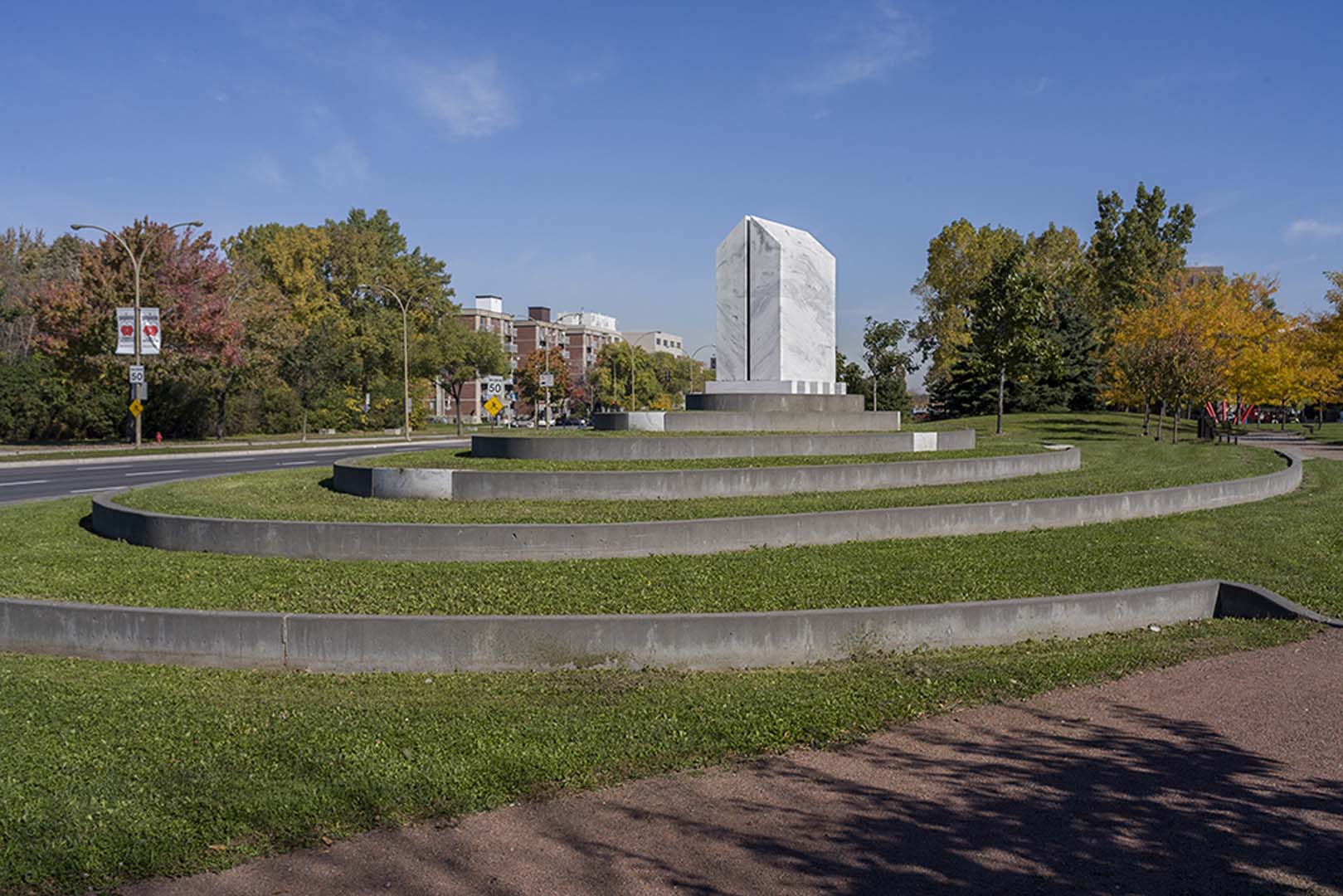Francine Larivée
La réparation
1998
Presentation of the artwork
The monument takes the form of a temple of white marble, cut in two through the middle. Within the narrow gap, two walls of red granite, facing each other, bear the names of peoples who have been victims of genocide in the twentieth century. The space between the two parts is lit, symbolizing the energy of healing. The broken temple rests on five frames that represent the five continents: an allegory for our responsibility to a humanity repeatedly struck by all sorts of evil.A strong commemorative gesture, La réparation forces us to never forget the genocides of the twentieth century and their victims but to keep them in our memory. The monument makes this public space a place in the heart of the city that, beyond pain, loss, and rancour, offers pardon and peace, as its title says: the beginning of reparation. Larivée also decided to arrange a group of small sites of reflection on the site. Paths, analogies for the movements and deportations of human beings, slowly take us back in time through a gradual ascent that leads to the summit, where the white temple sits.
Associated events
The Armenian genocide is considered the first in a long list of genocides in the twentieth century (Bosnians, Cambodians, Hutus, Gypsies, Jews, Kurds, Tatars of Crimea, Timorese, Tutsis, Ukrainians, and others). It began on 24 April 1915, when Armenian intellectuals and prominent figures were executed in Constantinople on the order of the Ottoman government. The massacres continued until the end of the First World War.
The term “genocide” was coined in 1944 by the American jurist Raphael Lemkin in a book he wrote about German Nazi war practices. The legal definition of the term – a crime of intentional destruction of a national, racial, religious, or ethnic group, in whole or in part – was formulated in the Convention on the Prevention and Punishment of the Crime of Genocide and adopted by the General Assembly of the United Nations on 9 December 1948.
Francine Larivée
Francine Larivée was born in Montréal, where she lives and works. A graduate of the École des beaux-arts de Montréal, she holds a bachelor’s degree in art history and a master’s degree in arts from the Université du Québec à Montréal. She made a striking entry into the world of visual arts in 1976 with the installation La Chambre nuptiale, an artwork dealing with relationships in couples that aroused much debate in Quebec circles at the time. Since then, Larivée’s interest in performing arts has turned to land art. Her works of public art enhance gardens and public spaces in Canada and abroad. One of her most recent productions is the sculpture Les liens (2011), on display in front of the main entrance to Hôpital Charles-LeMoyne, in Greenfield Park.
Awards and honours
- Prix Victor-Martyn-Lynch- Staunton (Conseil des arts du Canada), 2002






